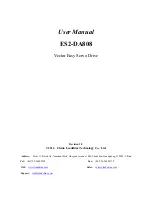
8.8 Manual Tuning
8.8.1 Tuning the Servo Gains
8-38
Decimal Points in Parameter Settings
Decimal places are given for the settings of parameters in the manual. For example with Pn100
(Speed Loop Gain), Pn100 = 40.0 is used to indicate a setting of 40.0 Hz. In the following
adjusted value guidelines, the decimal places are also given.
Model Following Control
You can use model following control to improve response characteristic and shorten position-
ing time.
Normally, the parameters that are used for model following control are automatically set along
with the servo gains by executing autotuning or custom tuning. However, you must adjust them
manually in the following cases.
•
When the tuning results for custom tuning are not acceptable
•
When you want to increase the response characteristic higher than that achieved by the tun-
ing results for custom tuning
•
When you want to determine the servo gains and model following control parameters yourself
The block diagram for model following control is provided below.
•
Speed Loop Gain (Pn100 [Hz]) and Speed Loop Integral Time Constant (Pn101 [ms])
Stable gain: Pn101 [ms]
≥
4,000/(2
π
×
Pn100 [Hz]), therefore
If Pn100 = 40.0 [Hz], then Pn101 = 4,000/(2
π
×
40.0)
≈
15.92 [ms].
Example
Model following
control
mKp, mVFF, mTFF
+
M
PG
+
+
Tf
Speed
Speed pattern
Time
Movement
reference
Torque feedforward
Speed control loop
Servomotor
Power
converter
Current
control
section
Speed loop
Speed control
section
Kv and Ti
Speed
reference
Position
loop gain
Kp
Deviation
counter
Position loop
Current loop
Encoder
Kp: Position loop gain (Pn102)
Kv: Speed loop gain (Pn100)
Ti: Speed loop integral time constant (Pn101)
Tf: First stage first torque reference filter time constant (Pn401)
mKp: Model following control gain (Pn141)
Speed
feedforward
mTFF: Model following control bias in the forward direction (Pn143)
Model following control bias in the reverse direction (Pn144)
mVFF: Model following control speed feedforward compensation (Pn147)
Position control loop
















































